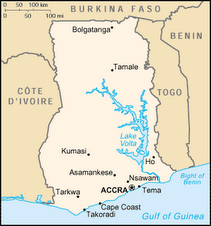As usual, it was a busy, interesting week. Tamale Teaching Hospital
has a catchment area of one and a half million people, resulting in more work
than our limited staff can handle. Our otolaryngology care also extends to
maxillofacial and plastic surgery since we do not have these specialties.
The infant mentioned in
my previous blog, who required a tracheostomy, presented this week with shortness of breath. He was referred
to Kofo Anokye Teaching Hospital, Kumasi, where there are more specialists and
facilities. No word yet.
Three weeks ago, we operated on a fifteen year old boy who had
been incorrectly treated for psychological problems, then migraines. He had a
large calcified, fungal cyst of the sinuses which extended to the base of his
skull. He presented this week with a headache,
vomiting and fever. I thought our surgery for treatment of his cyst may have
caused meningitis. However, in actuality he had malaria, the most common disease
here.



.jpg)


.jpg)






